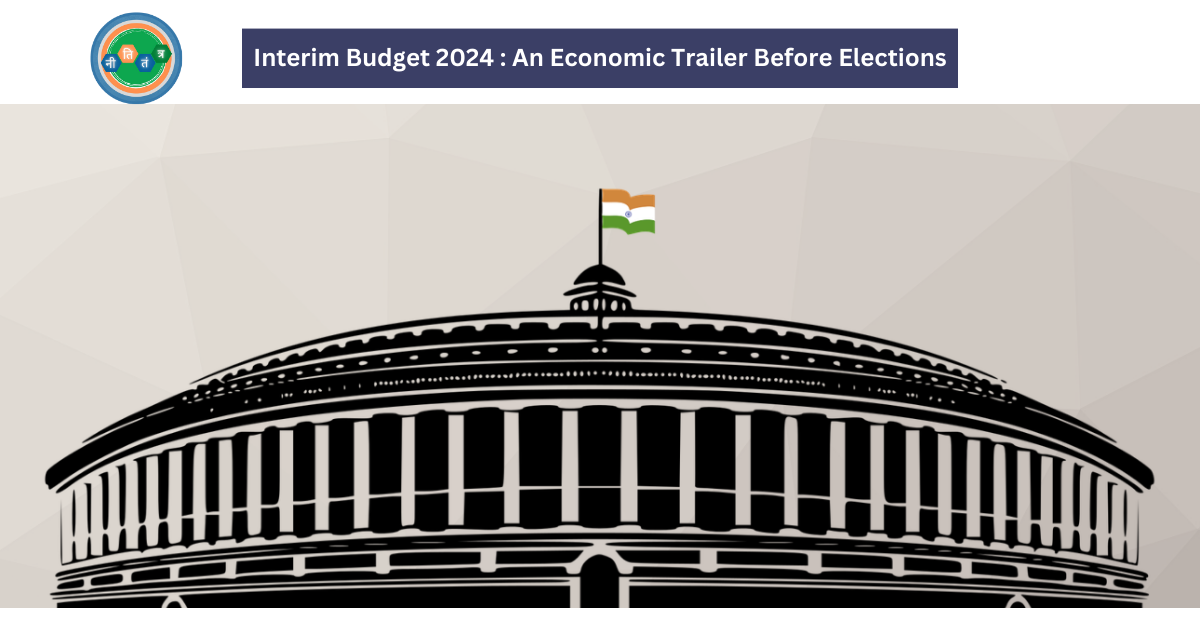It is not India’s decade but India’s century, said Bob Sternfels, CEO of the global consulting firm McKinsey & Co. The mini-economic Survey projected a growth rate of 7%, and the IMF, in its World Economic Outlook, projected 6.7%, which is a good sign for the Indian economy. “Viksit Bharat 2047” has arrived in the “Amrit Kaal” as Finance Minister Nirmala Sitharaman tabled the Interim Budget focusing on Gareeb, Yuva, Annadata and Nari (GYAN). Unlike all the armchair analysts, economists and political analysts expecting the announcement of socialist schemes and announcements specially focused on the Lok Sabha 2024 elections, the Interim Budget comes with very few new initiatives.
The Interim Budget reflects the expectations of global investors and India Inc. India has a stable economy, unlike its global counterparts. The Interim Budget mentioned the Government’s commitment to preventing leakages while transferring cash benefits to low-income people. DBT through Jan Dhan accounts saved Rs 2.7 lakh crore of the exchequer. With social justice at the centre stage of the Government, economic benefits to the poor and marginalized communities will level up their growth trajectory.
While talking about employment generation, the Finance Minister took a dig at the political parties that promoted nepotism and “Bhai Bhateejawad”, which obstructed the growth of India earlier. In the past few budgets, there was always a demand for an increase in the R&D sector, especially the private investments and more funds for Youth. A welcome step is a corpus of Rs 1 lakh crore for the tech-savvy Youth and providing them financing at low or zero interest rates. From dairy development to women empowerment, the focus on Self Help Groups and MSMEs will boost the entrepreneurial spirit of India’s commoners. People say India is raining entrepreneurs. Indeed, it is.
Infrastructure development has given rise to many employment opportunities and economic stability. The announcement of three more economic railway corridors will act as a linking pin to industries like energy, cement, ports, and others under the coveted PM Gati Shakti. The aviation sector has grown tremendously, with the number of airports now doubling to 149. ‘Now our common man can fly’, as the airports are touching the tier 2 and tier 3 towns under UDAAN. With new trains like Namo Bharat and Metro around the country, conveyance and traffic congestion would be easier.
Income tax slabs remain the same. Corporate taxation has been reduced from 30% to 22%. Tax filings have been made easier with the help of technology. GST has indeed eliminated the tax arbitrage and reduced the compliance burden of businesses as we rightly say, ‘One Nation, One Tax’. With a focus on Ease of doing business and Ease of Living, the Government’s interventions will primarily benefit the economy.
India has seen a surge in its domestic tourism. PM Modi has promoted India as one of the best tourist nations worldwide. Instances include G20 meetings at New Delhi, G20 and allied summits throughout India, including Northeast, recently hosting French President Macron in Jaipur, and promoting Lakshadweep as an alternative to the Maldives. The interim Budget announced an increase in allocation to Tourism with special assistance from the Centre to States for promoting it.
Out of all the stellar schemes implemented by the Government, PM Awas Yojana has also helped it electorally in all the state elections. As per a survey, around 49% of the beneficiaries of schemes like Ayushman Bharat, free ration, and PM Awas Yojana voted for the BJP in the Madhya Pradesh elections. Following the same formula, the Interim Budget announced the construction of additional 2 Crore houses in the next five years. FM mentioned that 70% of PM Awas Yojana’s homes are owned by women as sole owners or jointly owned. This highlights the ruling party’s focus on women’s empowerment and increasing the female voter base.
With “freebies or evades” taking a central stage in the state elections, especially AAP’s victory in Punjab and Congress’ victory in Himachal Pradesh, Karnataka, and Telangana, the Modi Government found a tricky approach to the Opposition’s free electricity promises by announcing rooftop solar panels. FM announced that up to 1 Crore houses will be installed with solar panels that will help them save Rs. 15,000 to Rs. 20,000 annually. The beneficiaries of this scheme can also sell the extra electricity produced to the DISCOMs and earn money.
The Interim Budget tackled the ongoing protests of Aanganwadi and ASHA workers nationwide, especially in Maharashtra. FM announced that all the Aangwanwadi and ASHA workers will be covered under the Ayushman Bharat scheme, thus bringing a good chunk of the population under the health insurance scheme. FM mentioned that the Indian economy fared relatively well compared to the UPA’s two terms and further announced that the Government will lay a White Paper on the Indian economy titled “Economy Then And Now”. This white paper can also be used as a “political war tool” to reply to all the economists and opposition party leaders who are critical of Modinomics.
It gives us the impression that the Government is committed to better implementing current schemes rather than announcing new initiatives. “We will bring a detailed roadmap for Viksit Bharat when we announce the Budget after General Elections” speaks volumes of the Government’s confidence in winning another term. “Development Plus Ram Mandir Plus Hindutva” seems to be the recipe for winning the Lok Sabha 2024 elections, which the NDA has been following.



📌Analysis of Bills and Acts
📌 Summary of Reports from Government Agencies
📌 Analysis of Election Manifestos

